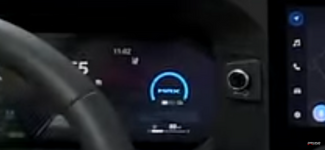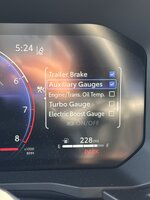I'm getting close to 1,000 miles on my 1958 model, and am slowly exploring all those gauges on the instrument cluster. I arrowed down to the Vehicle Information Display, then cycled through the various monitoring gauges. The one that confused me is the dual turbo boost and "Max" display. The turbo gauge makes sense (0 to 15 psi of turbo boost). I assumed the Max one shows the electric motor assist level at the top and the NiMH battery state at the bottom, but as the battery state dwindled to only three of 8 bars during a stop-and-start commute, I figured maybe I should read the manual for some expert guidance. On page 101 of that tome, this bar graph is called the State of Charge indicator, and then it says it "Displays the current amount of charge remaining in the 12-volt battery." I'm thinking that is wrong, because (a) there's another 9- to 19-volt gauge for the 12-volt battery, and (b) it would make more sense if this state of charge gauge is for the NiMH battery (288 volts). During today's drive, the bars ranged from 3 to 7 of 8. If it can cover nearly its full range in a single drive, it probably represents a pretty narrow range of NiMH voltages. Anybody have a better explanation? This reminds me of one of the recent marketing-department descriptions of the capabilities of the inverter on the Toyota website, claiming it delivers 1,200 kW of power. That's a fair fraction of the output of a standard wind turbine. Not sure where they hid that . . .
Last edited:




